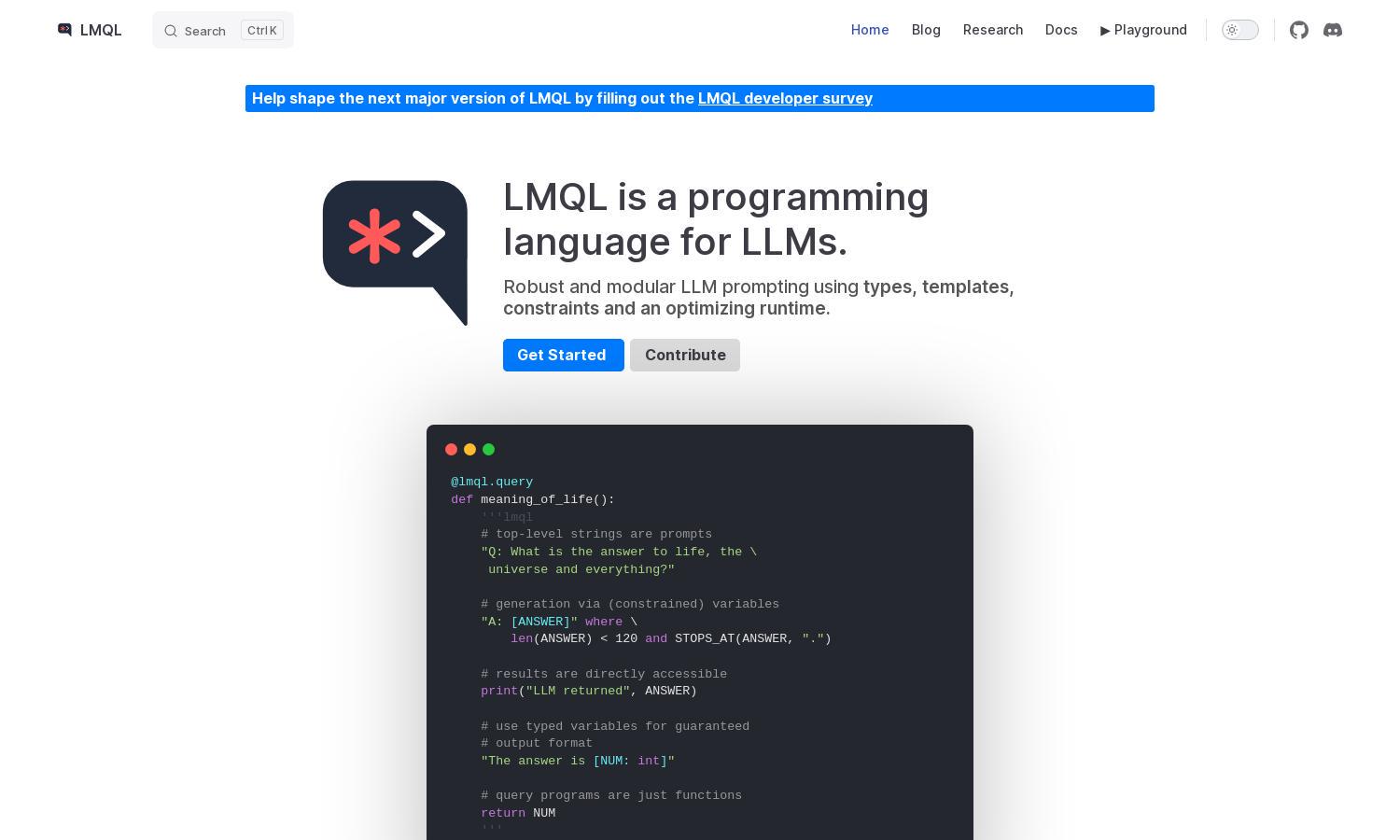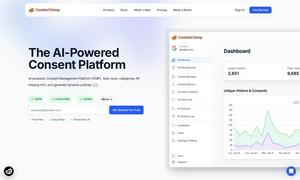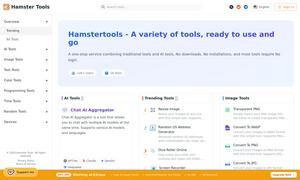LMQL

About LMQL
LMQL is an innovative programming language that facilitates seamless interaction with large language models. Targeting developers and researchers, it utilizes modular prompting and nested queries to create efficient, tailored prompts. With LMQL, users can optimize their language model interactions and streamline their project workflows.
LMQL offers various pricing plans to cater to users' needs, including free access with basic features and paid tiers that unlock advanced functionalities. Each subscription provides value through additional tools and capabilities, encouraging users to upgrade for enhanced performance and access to exclusive updates.
The interface of LMQL is designed for user-friendliness, featuring an intuitive layout that simplifies navigation. Users can easily access key functionalities, with a clean design that ensures seamless interactions. LMQL's unique features enhance usability, making interactions with language models efficient and enjoyable.
How LMQL works
Users begin their journey with LMQL by signing up on the platform and accessing tutorials for onboarding. The intuitive interface guides them through creating modular prompts and nested queries, optimizing language model interactions. Users can quickly switch backends, ensuring a seamless experience as they execute their queries with ease.
Key Features for LMQL
Modular Query System
The modular query system is a standout feature of LMQL, enabling users to create customizable and reusable prompts. With this functionality, developers can enhance their interactions with language models, resulting in more precise and efficient outputs tailored to their specific needs.
Easy Backend Switching
LMQL supports effortless backend switching, allowing users to adapt their LLM code across various platforms with a simple command. This feature empowers developers by offering flexibility and compatibility, enhancing the efficiency of their workflow and ensuring optimal performance.
Nested Queries
Nested queries in LMQL offer a powerful way to organize and manage complex prompting tasks. This feature allows users to build modular instructions and share components efficiently, streamlining their language model interactions and improving productivity across various projects.
You may also like:








